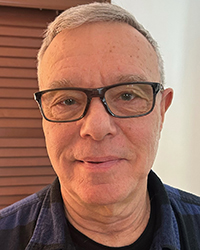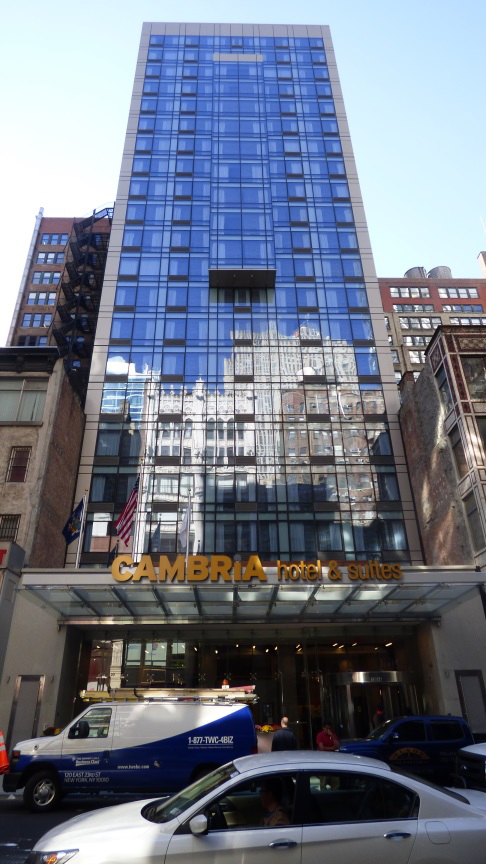News:
Green Buildings
Posted: April 25, 2011
Barbara Parker and Michael Roach: Learning from the disaster in Japan
From the recent news, regarding the unbelievable tragedies that have happened in Japan, we have all been able to witness the terrible complications that arise when nuclear power plants are part of a massive natural disaster, caused by events such as an historic earthquake and tsunami.
As the adage regarding nuclear power goes, "When they work, they work extremely well; when they fail they fail catastrophically."
At the vary least, the radiation leaks that have occurred so far put the population living in the nearby surroundings at terrible risk.
My question is: why aren't proven and reliable renewable energy technologies used more extensively in our energy mix, especially to supply densely populated areas such as the commercial and industrial coastal cities of Japan or even New York?
This question is ignored until a failure or explosion of the nuclear material does so much irreparable damage to both the people living and working in the affected vicinity and eventually the entire world. We have several other great sources of energy that are not expensive and do not harm the population nor do they release any toxic waste as do nuclear plants. There are presently several. Solar energy is certainly one. Solar, in the long run is not expensive, not dangerous for the population and reliable. Some others are wind energy and even geo-thermal. Yes, some of these methods may have problems at times, but none of them causes the nuclear holocaust that has happened to the northern area of Japan and eventually the entire world, as we know it.
Just imagine if renewable energy technologies had been used more extensively instead of nuclear power. The renewable energy generation technologies would have been damaged or destroyed like much of the other property in the coastal disaster zones. But, the recovery period would be measured in years rather than decades as will happen from the major nuclear system failures resulting from the recent Japanese earthquake and tsunami. Additionally, the vast amount of personnel needed only to help clean up at the nuclear plant failure sites, could have been used very well to give more aide to the citizens of the area, as was desperately needed.
The entire problem cannot be blamed solely on the natural disasters. The nuclear power plants at Fukushima were designed and maintained power systems waiting for any natural disaster to happen.
In an article by Hiroko Tabuchi, Norimitsu Onishi and Ken Belson that ran in the New York Times, they stated, "Government regulators approved a 10-year extension for the oldest of the six reactors at the power station despite warnings about its safety. The regulatory committee reviewing extensions pointed to stress cracks in the backup diesel-powered generators at Reactor No.1 at the Daiichi plant, according to a summary of its deliberations that was posted on the website of Japan's nuclear regulatory agency after each meeting. The cracks made the engines vulnerable to corrosion from seawater and rainwater. The generators are "thought to have been knocked out by the tsunami, shutting down the reactor's vital cooling system."
The Tokyo Power Company, which runs the plant, has since struggled to keep the reactor and spent fuel pool from overheating and emitting radioactive materials.
Several weeks after the extension was granted, the company admitted that it had failed to inspect 33 pieces of equipment related to the cooling systems, including water pumps and diesel generators, at the power station's six reactors according to findings published on the agency's website shortly before the earthquake.
Regulators said that "maintenance management was 'inadequate' and that the "quality of inspection was insufficient."
In this situation where so many lives are lost and so many people are in danger of toxic radiation levels, scarce recovery resources and time are being expended to fix the nuclear plants rather than helping people in need of immediate care, shelter and food.
Unlike nuclear power plants, the fuel for solar power plants is non-toxic and free. There is nothing toxic in highly damaged solar systems. There are many issues about how to integrate renewable energy on a large scale, but it is certainly feasible and cost effective to build a utility grid generation system without nuclear power.
It is possible to turn away from our reliance on nuclear power. Since the disaster, Germany has closed seven nuclear plants and put a moratorium on future development. Germany, which already leads the world in implementing solar and wind power at large scale, has now redoubled its efforts in changing its power generation mix away from nuclear power.
In California, governor Brown signed a new law that increases the state's Renewable Portfolio Standard from 20% by 2020 to 33%.
What is New York doing to change its policies? Nothing.
Is the real estate industry up in arms that all of the monetary and social value they have accumulated in New York real estate could be wiped out by a disaster similar to Japan? No.
The common response to the question is that "it couldn't happen here." I am certain that many people in New York said the same thing before Pearl Harbor on September 11th or Hurricane Katrina.
The harsh reality is that no matter how long the odds are that historic catastrophes will not happen to us in our lifetimes - sometimes they do. They also happen at a regularity more frequently than the statisticians predict.
It is time for the real estate industry to raise its head out of the sand of daily business and take more responsibility for our energy future. A piece of legislation (New York Solar Jobs Act of 2011 - S.4178 and A.5713) is currently in the New York legislature that could create a solar market on par with that of New Jersey. This act needs the support of the real estate industry.
From a pure risk mitigation perspective, it is time to change New York from an antiquated and vulnerable centralized energy market to a sustainable, distributed energy market based on high integration of renewable power systems.
The best part of such change is that not only will the entire population of New York benefit, but individual properties that incorporate the maximum solar power system will have lower operating costs, higher asset values and be more finance-able.
Go solar New York!
Barbara Parker is president and Michael Roach is VP of energy and sustainability at Green Fox Communications, New York, N.Y.
Tags:
Green Buildings
MORE FROM Green Buildings
IREON Insights: DURA Architectural Signage manufactures and delivers over one million signs
Long Island City, NY Since its founding in 1955, IREON member DURA Architectural Signage has proudly manufactured and delivered more than one million signs to clients across a wide range of industries. From architectural interior signage to large-scale exterior installations, their work can be seen in corporate

Quick Hits







.gif)


.jpg)
.gif)